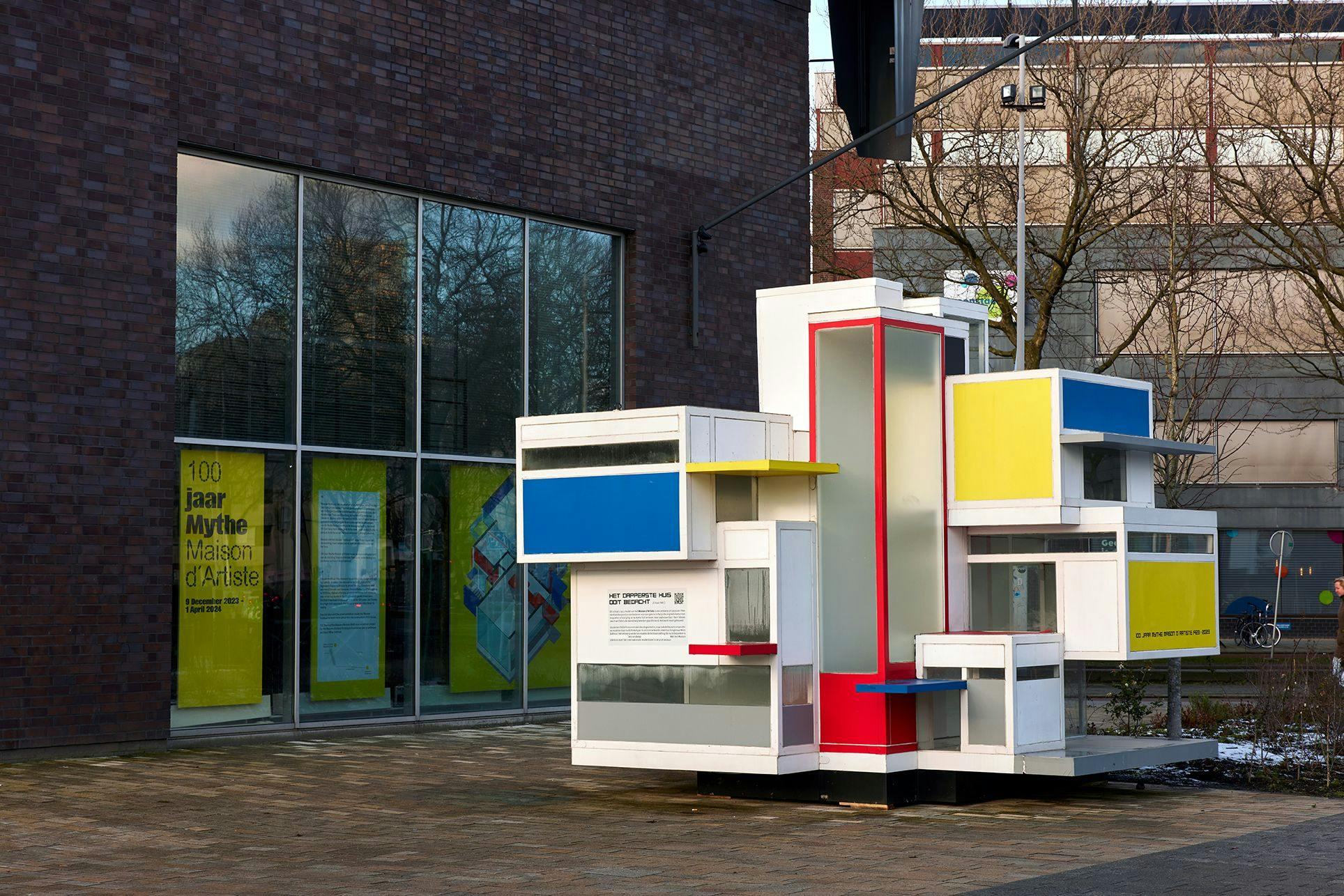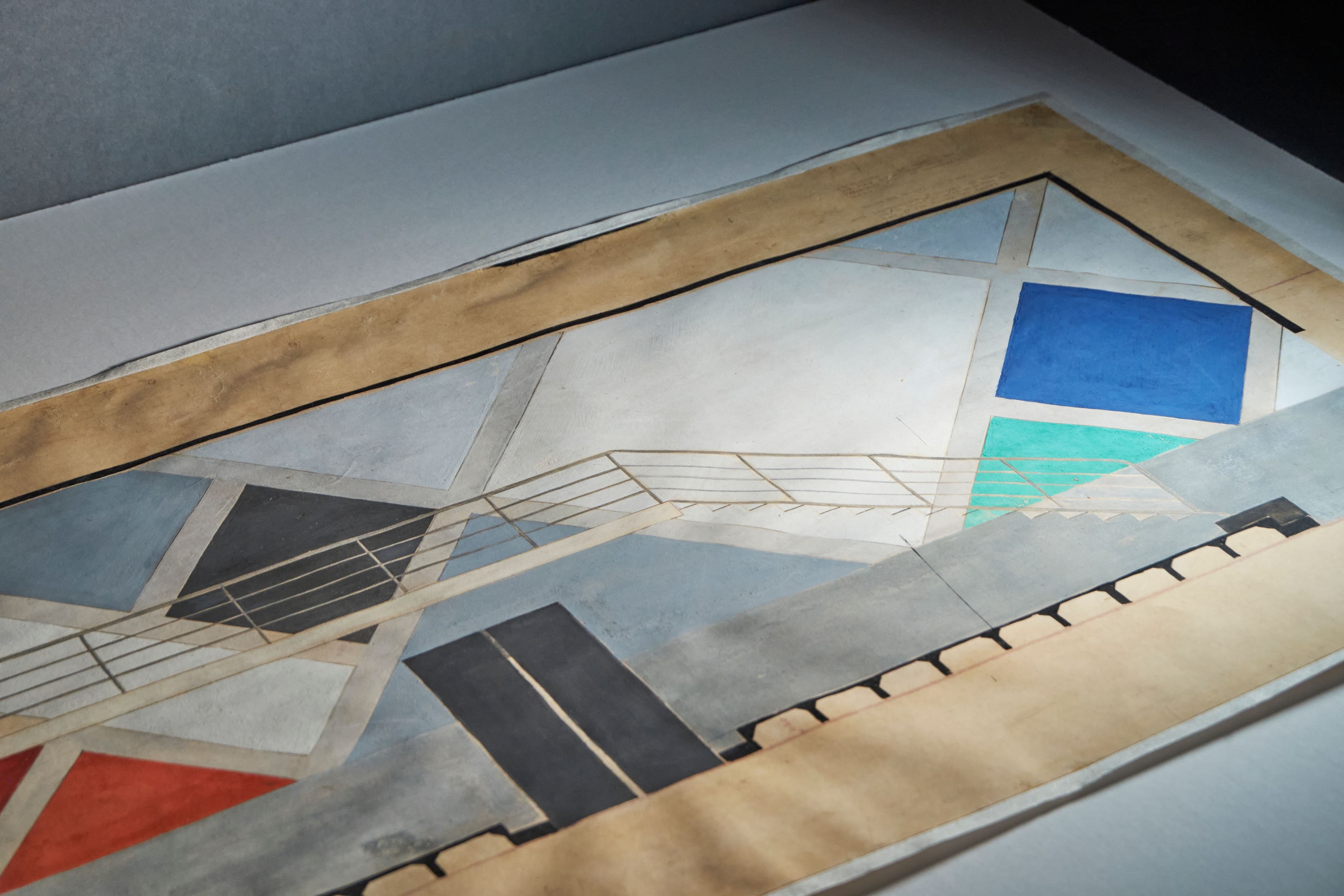100th Anniversary of Legendary De Stijl Exhibition
15 October marks exactly 100 years since the legendary De Stijl exhibition opened at Galerie L’Effort Moderne in Paris. It was the first group exhibition of artists from De Stijl, including Gerrit Rietveld, Vilmos Huszár, Theo van Doesburg and Cornelis van Eesteren. The collection of the Nieuwe Instituut contains pieces that were part of this historic event.
9 October 2023
Influences
In 1927, Theo van Doesburg already knew that the 1923 exhibition Les Architectes du Groupe ‘de Styl’ in Paris was proving a major influence on the international art world. He wrote in his magazine De Stijl:
“ As far as architecture is concerned, one can speak of modern architecture up to and after 1923. 1923 marked a turning point in architecture and it is certainly not a coincidence that the most important leaps in architecture abroad only turned out to be possible after 1923. ”
From 1917, when Van Doesburg published the first issue of the magazine De Stijl, until his death in 1931, De Stijl was at the centre of comprehensive innovations in painting, architecture, applied arts and graphic design. In addition to being a magazine, De Stijl was also an informal association of artists who, despite sometimes fierce disagreements, shared a common ideal: the integration of art and life, and the harmonious collaboration between different artistic disciplines.
The exhibition included five rooms, with work by Van Doesburg, Van Eesteren, Huszár, Oud, Rietveld, Wils, Mies van der Rohe and Van Leusden. The participation of the last two indicates that the Groupe ‘de Styl’ was a rather changeable group. It was formed by artists and architects who found each other at certain points in shared preferences and aversions.
Léonce Rosenberg’s gallery
Art dealer Léonce Rosenberg’s Galerie L’Effort Moderne was a small but stately gallery on the Rive Droite of the Seine, which focused on cubism and avant-garde art. Rosenberg had asked members of De Stijl to design a country house and ‘centre for culture’ in the Paris area and to exhibit the drawings and models in his gallery. Van Eesteren would design the building (Hôtel Particulier), Mondrian and Van Doesburg would give it colour and Rietveld would design the furniture. Due to mutual disagreement, Theo van Doesburg developed the idea alone with Cornelis van Eesteren. Together, they also made models and designs for a Maison Particulière and a Maison d’Artiste. Van Doesburg also submitted his colour design for the university hall that Van Eesteren had drawn for Plan Zuid in Amsterdam.
“ In the absence of the desired, collectively developed activity [...], in collaboration with Van Eesteren and in direct contact with Piet Mondrian, the common principles of 'De Stijl' were tested, also in connection with colour in architecture. As a result, models, floor plans and designs were created that served as examples of future architecture for the Russians, Czechs, French and Germans. ”
Maison d'Artiste
This certainly applies to the design of Maison d’Artiste, which continues to inspire artists and architects to this day, mainly due to its floating character and the ultimate fusion of architecture and painting. The designs for the Rosenberg exhibition were no longer about the physical integration of architecture with other arts, as before, but about the development of a completely new spatial concept.
Also 100 this autumn, Maison d’Artiste is celebrating its anniversary with a travelling (re)construction of the house.
Disclosing Architecture
The exhibition history of Theo van Doesburg’s work has been mapped out as part of the Disclosing Architecture programme. This gives us an almost complete picture of where, when and for how long his works were exhibited. This means we know exactly which works from the collection were exhibited in Léonce Rosenberg’s gallery in 1923. There were 21 of them, all from the archives of Theo van Doesburg and Cornelis van Eesteren.
Sources
- Data en Feiten (betreffende de invloedsontwikkeling van De Stijl in 't Buitenland) die voor zich spreken [Dates and Facts (concerning the development of De Stijl’s influence abroad) that speak for themselves]. In: De Stijl, jrg. 7, nos 79-84, 1927.
- Sjoerd Faassen and Hans Renders. Ik sta helemaal alleen. Theo van Doesburg 1883-1931 [I stand all alone. Theo van Doesburg 1883-1931]. De Bezige Bij, Amsterdam, 2022.


